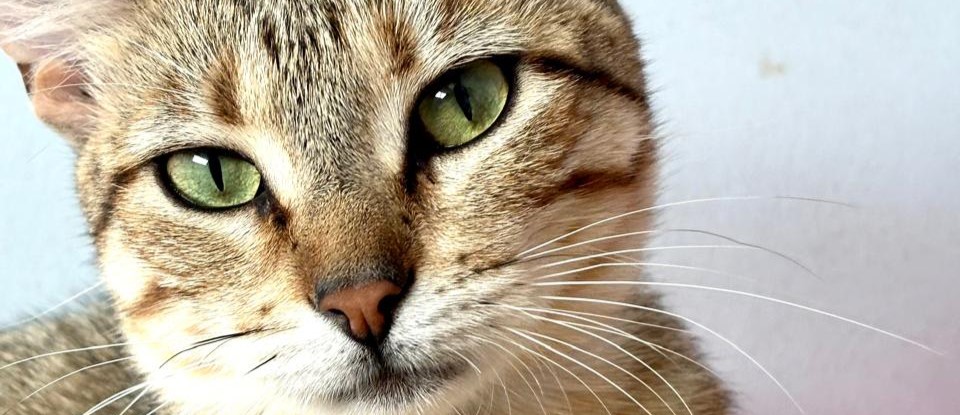Feline bladder urolithiasis: clinical case
DOI:
https://doi.org/10.29059/cvpa.v3i1.37Keywords:
cystotomy, feline lower urinary tract disease (FLUTD), struvite, Vesical urolitiasisAbstract
A 2.5-year-old spayed female Domestic European Shorthair cat was presented with hematuria and chronic urinary incontinence lasting five months. Physical examination revealed abdominal pain, fever (39.8 °C), and 7% dehydration. The complete blood count showed hyperproteinemia, monocytosis, and neutrophilia. Blood biochemistry indicated post-renal azotemia (elevated urea and creatinine). Urinalysis revealed hyposthenuria (specific gravity 1.015), alkaline pH, hematuria, pyuria, bacteriuria, and struvite crystals. Imaging studies confirmed bladder urolithiasis. The patient was hospitalized and began treatment with cefovecin, buprenorphine, omeprazole, an acidifying diet, and F3 feline facial pheromone. After four days of stabilization, a cystotomy and urolith extraction were performed. The clinical evolution was favorable, with progressive normalization of urination. The patient was discharged with a Urinary S/O diet, purified water, a clean litter box, and F3 pheromone. This case highlights the importance of a comprehensive diagnostic and therapeutic approach in FLUTD.
References
Del Angel-Caraza, J., García-Ramos, J. E., & Morales-Sánchez, R. (2020). Factores asociados a la recurrencia de urolitiasis en felinos domésticos. Revista Mexicana de Ciencias Veterinarias, 11(3), 45–53 https://link.gale.com/apps/doc/A774988033/AONE?u=anon~d0c35c2b&sid=googleScholar&xid=dfef80f8
Escobar, J. C. (2017). Prevalencia y características clínicas de la urolitiasis en gatos domésticos. Revista Colombiana de Medicina Veterinaria, 25(1), 23–30.
Evangelista, M. C., Leisewitz, A. L., & Hartman, M. J. (2023). Use of abdominal ultrasound and Doppler for diagnosis of feline urinary tract disease. Journal of Feline Medicine and Surgery, 25(2), 134–142. https://doi.org/10.1177/1098612X221146896 DOI: https://doi.org/10.1177/1098612X221145477
Grauer, G. F. (2015). Feline lower urinary tract disease (FLUTD): Pathophysiology and diagnostic approach. Veterinary Clinics of North America: Small Animal Practice, 45(4), 621–633. https://doi.org/10.1016/j.cvsm.2015.03.005
Khaled, B., Remichi, M., & Touhami, N. (2020). Étude clinique et biochimique de la lithiase urinaire chez 32 chats. Revue Vétérinaire d’Algérie, 36(2), 78–84.
Mendoza-López, M., Pérez-Cruz, E., & Valdez-Alarcón, J. J. (2019). Caracterización de urolitos en felinos domésticos en México: Estudio retrospectivo 2013–2018. Revista Científica de Veterinaria, 30(4), 195–202.
Osborne, C. A., Lulich, J. P., Kruger, J. M., Ulrich, L. K., & Koehler, L. A. (2009). Analysis of 451,891 Canine Uroliths, Feline Uroliths, and Feline Urethral Plugs from 1981 to 2007: Perspectives from the Minnesota Urolith Center. Veterinary Clinics of North America: Small Animal Practice, 39(1), 183–197. https://doi.org/10.1016/j.cvsm.2008.09.011 DOI: https://doi.org/10.1016/j.cvsm.2008.09.011
Parrales Ramos, G. (2021). Factores predisponentes para la formación de urolitos en felinos domésticos. Tesis de Licenciatura, Universidad Técnica de Manabí.
Remichi, M., Khaled, B., & Touhami, N. (2020). Étude rétrospective sur les cas de lithiase urinaire chez le chat: Prévalence, caractéristiques cliniques et biochimiques. Revue Algérienne de Sciences Vétérinaires, 54(3), 210–218.
Smith, A. J., Thompson, M. A., & Larsen, J. A. (2021). Postrenal azotemia in cats with urethral obstruction: Clinical and biochemical response after decompression. Journal of Veterinary Internal Medicine, 35(3), 1154–1160. https://doi.org/10.1111/jvim.16147 DOI: https://doi.org/10.1111/jvim.16147
Sutherland-Smith, J., & Penninck, D. G. (2015). Ultrasonographic diagnosis of urolithiasis in cats and dogs. Veterinary Radiology & Ultrasound, 56(1), 28–34. https://doi.org/10.1111/vru.12201 DOI: https://doi.org/10.1111/vru.12201
Taylor, A., Demetriou, J., & Gunn-Moore, D. (2025). ISFM consensus guidelines on the management of feline lower urinary tract disease (FLUTD). Journal of Feline Medicine and Surgery, 27(1), 12–35. https://doi.org/10.1177/1098612X245000102 DOI: https://doi.org/10.1177/1098612X241309176
Vila, F. R., Martín, N., & López, D. (2018). Interpretación del análisis de orina en gatos con urolitiasis. Clínica Veterinaria de Pequeños Animales, 38(3), 123–129

Downloads
Published
How to Cite
Issue
Section
License
Copyright (c) 2025 Ciencias Veterinarias y Producción Animal

This work is licensed under a Creative Commons Attribution-NonCommercial-ShareAlike 4.0 International License.
Accepted 2025-08-15
Published 2025-08-28







